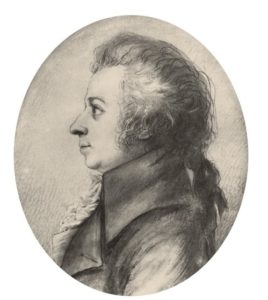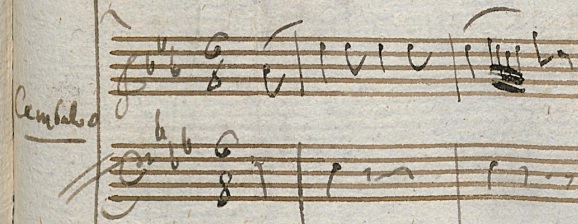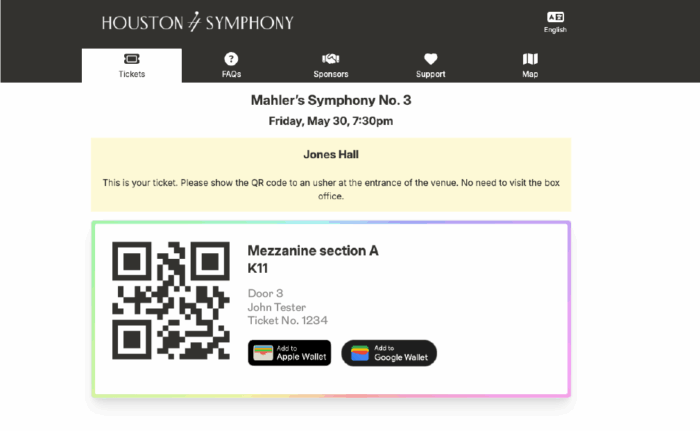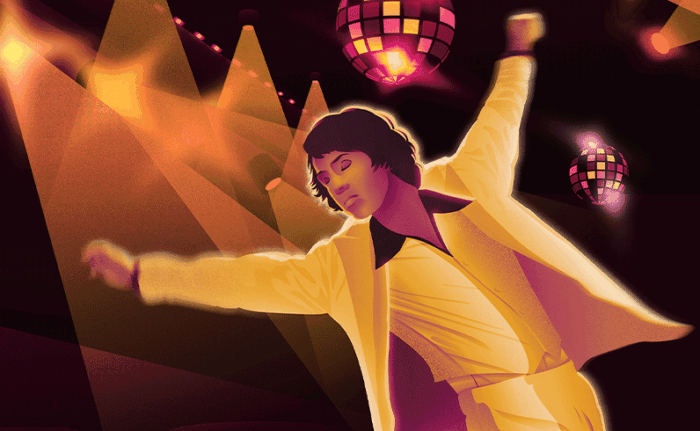Above: Detail of Jean Honoré Fragonard’s The Love Letter.
This Thanksgiving weekend, the Houston Symphony welcomes acclaimed pianist Inon Barnatan back to Jones Hall for performances of Mozart’s enchanting Piano Concerto No. 22. Learn more about this colorful work in this post.

Mozart completed the Piano Concerto No. 22 in E-flat major on December 16, 1785 as he was approaching the height of his popularity in Vienna. Almost simultaneously, he had been working on the score to The Marriage of Figaro. The following spring, the opera would prove so popular that Emperor Joseph had to limit encores of individual numbers during performances.
Though opera was the most prestigious genre of music, piano concertos formed the bread and butter of Mozart’s career at the time, and his performances of his own works were in high demand. Michael Kelly, an Irish tenor who originated the roles of Basilio and Don Curzio in The Marriage of Figaro, left a vivid description of Mozart’s piano technique from this time: “His feeling, the rapidity of his fingers, the great execution and strength of his left hand particularly, and the apparent inspiration of his modulations, astounded me.”
As far as we know, Mozart likely performed this particular concerto at least three times during his life: twice within a few weeks of its completion and again during a series of subscription concerts the following Lent. Apart from Mozart’s usual formal perfection and melodic genius, this concerto is especially noteworthy for its colorful woodwind writing, which employs clarinets in place of the oboes expected in an orchestra of this era.
The Music
The concerto begins with an orchestral introduction that introduces the main themes of the first movement:
An attention grabbing, drumroll-like first idea transitions to a more lyrical melody in the violins. The piano enters with a new theme of its own that is soon interrupted by the drumroll figure. The transitional passage is then transformed by the soloist with an expressive episode in a dark, minor key. After this transitional passage, the second theme introduced by the violins in the introduction is surprisingly absent; instead, the soloist plays a new theme.
An orchestral tutti then leads to a more unstable, developmental section featuring virtuoso arpeggios for the piano that pass through many different keys. This searching music comes to rest on a brief reminiscence of the piano’s second theme, leading the return of the drumroll theme in the home key. The transition, now free of minor-key disturbances, leads to the orchestra’s original second theme from the introduction, played by the soloist for the first time. A reprise of the soloist’s own theme immediately follows, and the ensuing orchestral passage builds to a cadenza, an extended passage for the soloist alone. Mozart would have improvised this solo on the spot during his own performances of the concerto, so he never wrote this passage down. Performers today must supply their own cadenzas. After the soloist’s final trill (the traditional signal that the cadenza is over), the orchestra brings the movement to a spirited close.
The slower second movement, a melancholy Andante, is the heart of the concerto. Regarding an early performance, Mozart’s father Leopold reported that it had been a particular favorite with the audience: “the Andante had to be repeated (something rare).” The strings alone introduce the expressive main theme of the movement before the piano enters and plays a variation on it. This incipient theme and variations, however, is interrupted by the woodwinds, who attempt to brighten the mood with a contrasting melody in a major key. Nevertheless, the piano and strings insist on another variation of the gloomy main theme. A duet for flute and bassoon once again tries to intervene with a new major-key theme, but the piano and orchestra emphatically return to the main theme. In the end, the woodwinds join the piano, acquiescing to the dark mood of the movement in an achingly beautiful coda.

The gloomy mood of the Andante is immediately banished by the bright, sunny main theme of the finale. By tradition, this movement is a rondo: the main theme alternates with contrasting episodes. Within that general structure, however, Mozart has a few surprises in store. After the dancing main theme, the music comes to a pause as the strings play a simple, pulsing accompaniment figure. Above it, the soloist plays a delicate, exquisite melody. A transition then leads not back to the main theme, but to a third melody with a broadly lyrical, singing character. The main theme then returns, but is soon derailed into a more tumultuous developmental section, which suddenly comes to a halt with a cadenza. As if entering a dream world, the soloist leads us to a slow Andante cantabile featuring the woodwinds. Another cadenza then returns us to a reprise of the main theme and the broad, lyrical melody. After another cadenza, the main theme returns once more. Just as the movement is about to end, the music pauses, and we hear a brief reminiscence of the delicate melody. It’s as if Mozart is saying, “And you thought I was going to forget about that one!” The concerto then bounds to its joyful end. —Calvin Dotsey
Don’t miss Mozart’s Piano Concerto No. 22 on November 23, 24 and 25, 2018! Get tickets and more information at houstonsymphony.org.



